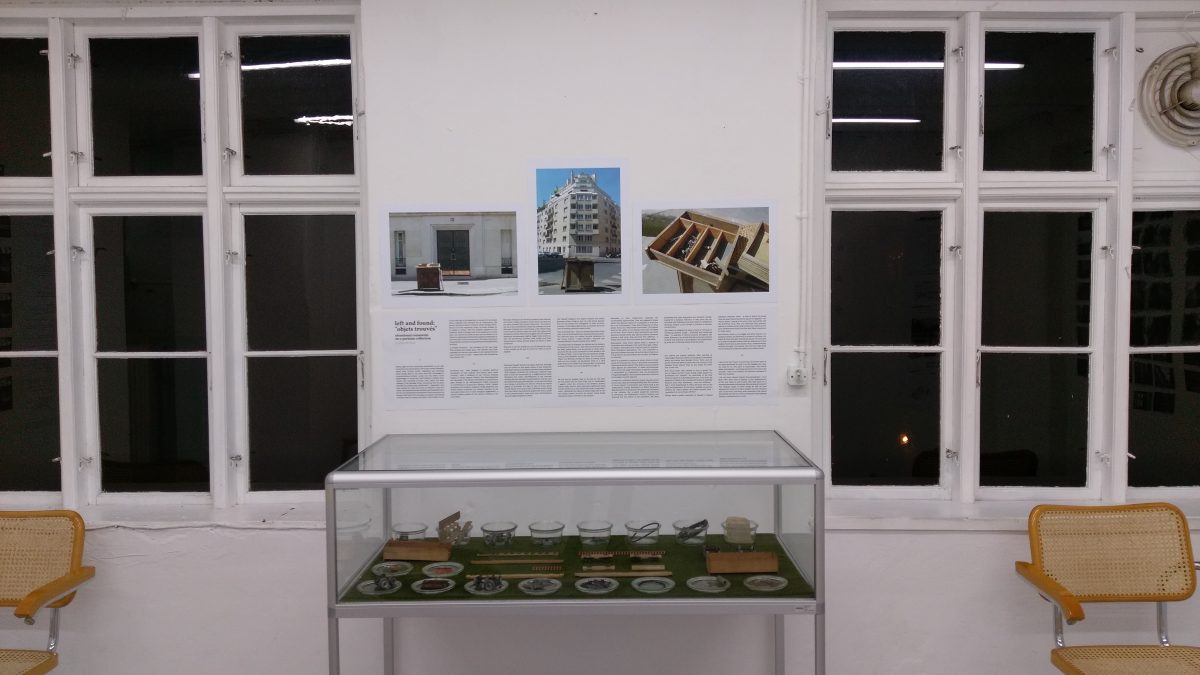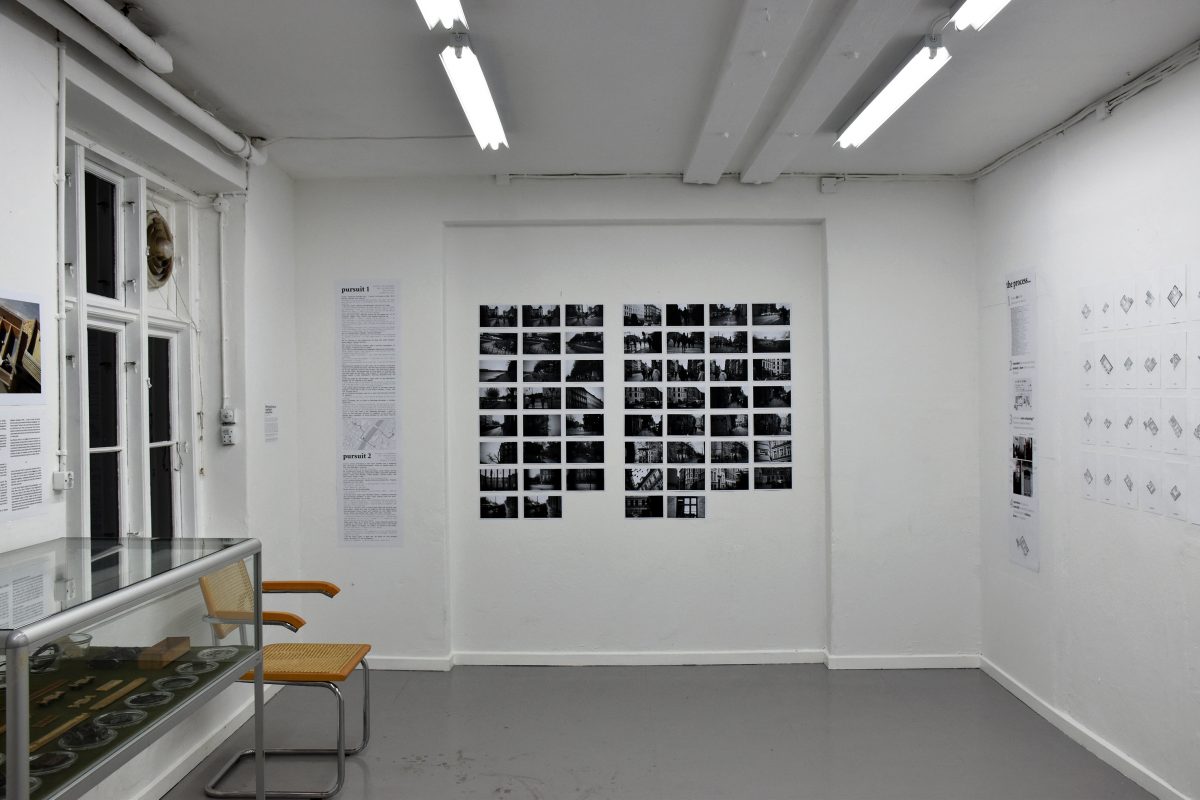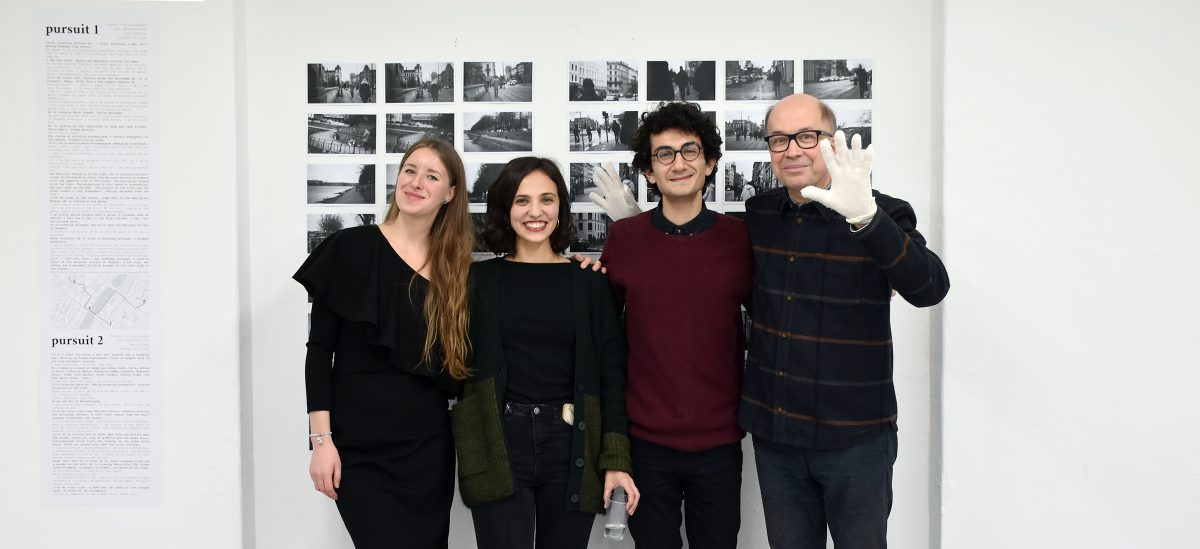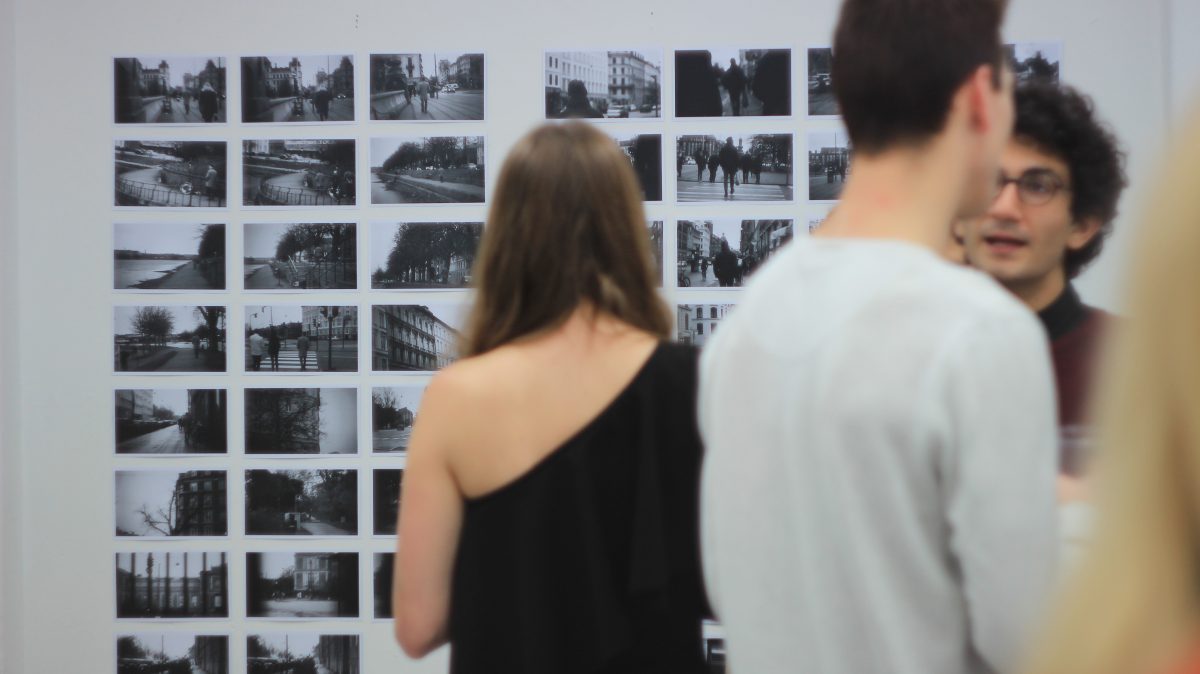
The group exhibition “The Everyday as a Generator of Art” opened on Dec 14, 2018 at Magasin Lotus in Copenhagen. Originating from projects developed by 4CITIES students within the framework of the course “Urban Culture & Cultural Theory”, taught by Professor Henrik Reeh, the exhibition showcased four separate, yet related projects by Arshia Eghbali (To all the beds I loved…), Francesca Spigarolo (An Attempt at Exhausting a Place in Nørrebro), Mariia Kostenko (Following the Steps on Copenhagen’s Paving Stones), and Henrik Reeh (Left and Found: Objets trouvés). The exhibition was made possible with the efforts of Albert Grøndahl of Magasin Lotus, and the support of the University of Copenhagen and Statens Kunstfond.
The City is the space in which modern patterns of life and art are born. This is why urban culture is an essential component in the programs of Modern Culture and Comparative Literature at the University of Copenhagen. In a course titled “Urban Culture & Cultural Theory”, Henrik Reeh, Ph.D. and Associate Professor, introduces 50 Master’s students from all over the world to the realm of “Humanistic Urban Studies”. This course proposes another way of approaching cities and their cultures. Indeed, urban culture goes beyond urban planning, urban sociology and architecture. Urban life has to do with perception, experience and signification. Urbanity is a matter of aesthetics. Literary texts and visual artworks are on the program. And the topics proposed for the presentations in the weekly seminars leave room for artistic talents, not least among the students in the 4CITIES. Exhibiting such works is a first step on a new bridge between university and the art world.

THE EVERYDAY AS A GENERATOR OF ART: a manifesto
by Arshia Eghbali & Francesca Spigarolo
Our time and space are dominated by the everyday. Traffic lights going red and green and back to red again. Pupils going to schools. Commuters getting on and off trains. Bus schedules. Work hours. Church bells. Squares. Streets. Shops. Houses. Office buildings. Going to work. Getting home. Forgetting grocery. Going shopping. Getting home again. Going for a walk. Looking for a new lamp. Meeting a friend. Having the third coffee of the day. Eat. Walk. Look. Sleep. – LIVE!
Living is a mundane task. It generates a rhythm. It generates patterns, habits, routines, repetitions.
Do we shape the everyday or does the everyday shape us?
Living is a creative task. It generates variations. It generates exceptions, deviations, improvisations, multiplicity, the unpredictable.
The everyday shapes us, we shape the everyday.
We navigate through the everyday following a set of widely-accepted rules – so normalized that we do not even acknowledge their grip. As such, we often find ourselves performing automatic tasks. Crossing a street. Looking left and right. Waiting for a green light. Through rules, the everyday shapes us.
Once we recognize the existence of rules, we can externalize them. We can exaggerate, transform, deconstruct them. In other words, we can play with them. Play is a creative engagement with the rules. Through rules, we shape the everyday.
The formula is simple: take a mundane act, give yourself a rule, play. Walking becomes shadowing. Looking becomes classifying. Sleeping becomes remembering. Exploring becomes collecting.
The intervention is minimal: you disrupt the automatism of the mundane only once, with a self-imposed rule, and then retrieve back into a submissive position. The new rule is to be followed automatically. The outcome is ‘generated’: the everyday becomes a generator of art.
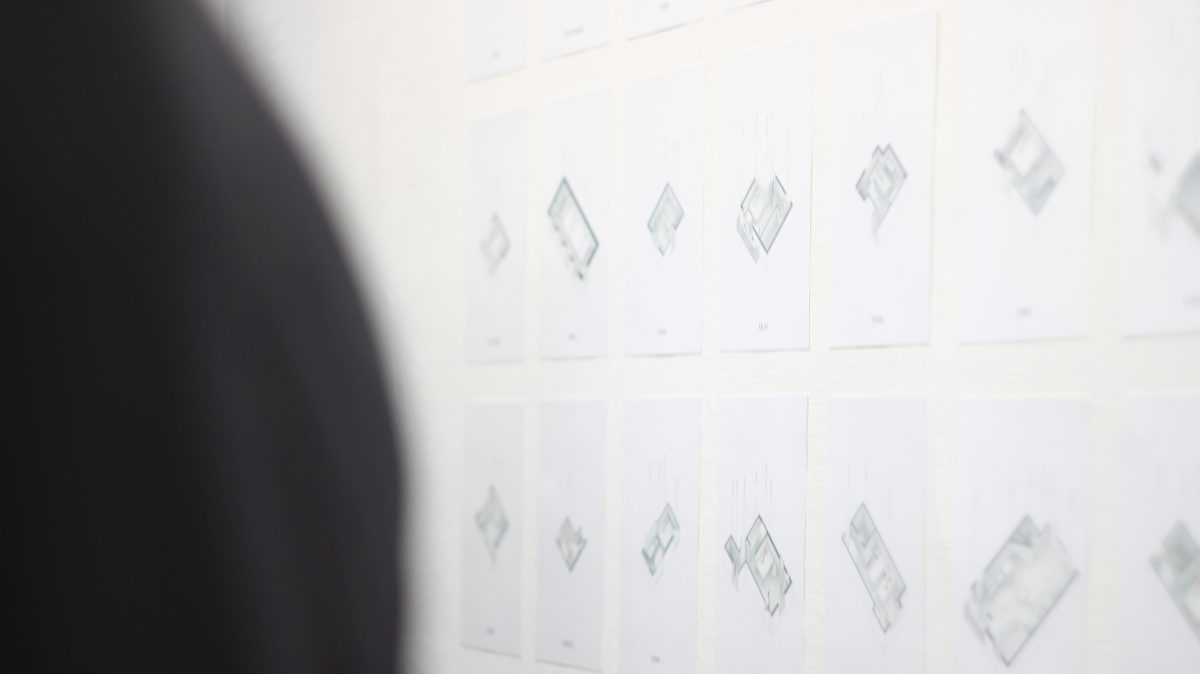
TO ALL THE BEDS I LOVED…
by Arshia Eghbali
“J’aime mon lit.” – Georges Perec, Espèces d’espaces, 1974
There are times when I lie down on my bed and I sink into my sheets as the storm of nostalgia hits me. Places, faces, names, words, all rush through my head and I dream of a lost time. Memories are elusive. It is hard to grasp them while one leads to the other and holes are left unfilled. I strive for a point of reference.
I think of all the places where I have slept. No matter how exceptional or mundane, how long or short my day had been, at the end of it I have slept – somewhere. That is a point of reference. My bed, be it a king size, a couch, a torn mattress or the laid-back seat of a bus, is a point of reference for my memories.
These beds and these places however, have no meaning outside of my memories. To other people, they are simply spaces. To me, they trigger countless memories that drift away but, in the end, come home to these spaces. Places where I have slept house my memories.Inspired by Lieux où j’ai dormi, Georges Perec’s never-fulfilled project to describe in writing the places where he had slept, I set off on a journey of self-exploration and auto-archaeology to recall and reproduce 28 of the places where I have slept. These cold abstract spaces are architectural representations to others, but to me, they are treasure chests holding my most intimate moments – memories frozen in space.
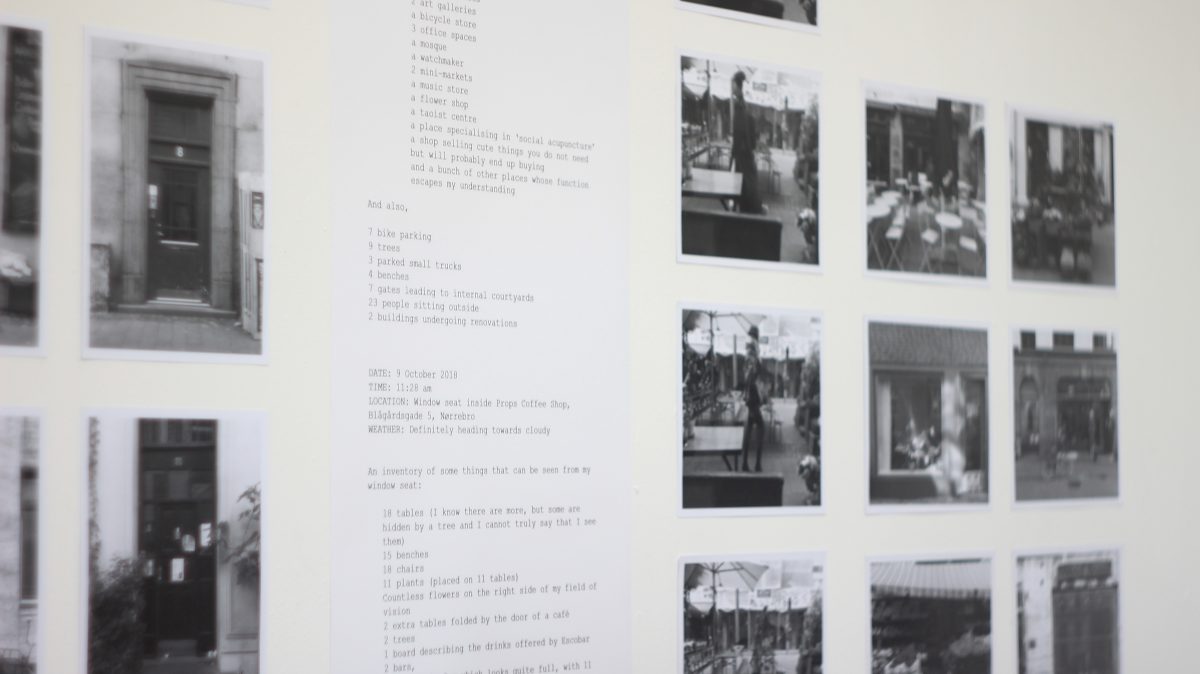
AN ATTEMPT AT EXHAUSTING A PLACE IN NØRREBRO
by Francesca Spigarolo
“How should we take account of, question, describe, what happens every day and recurs every day: the banal, the quotidian, the obvious, the common, the ordinary, the infra-ordinary, the background noise, the habitual?” – Georges Perec, Approaches to what?, 1973
If I were to draw my emotional map of Copenhagen, Blågårdsgade would certainly appear among the main landmarks. On my first day in town, I was brought there by a directionless drifting through the city’s streets. Since then, I often found myself retracing my steps, returning to a place that has by now become part of my intimate geography of the city.
Following Perec’s call for an investigation of the quotidian, for the exhaustion of the places we inhabit, in this piece I attempt an exploration of a familiar place as observed through new lenses. By giving myself one simple rule – note down everything you can see – I find myself immersed in a new place, at the same time ordinary and peculiar. What emerges is a portrait of Blågårdsgade in the form of an inventory of its most mundane manifestations.
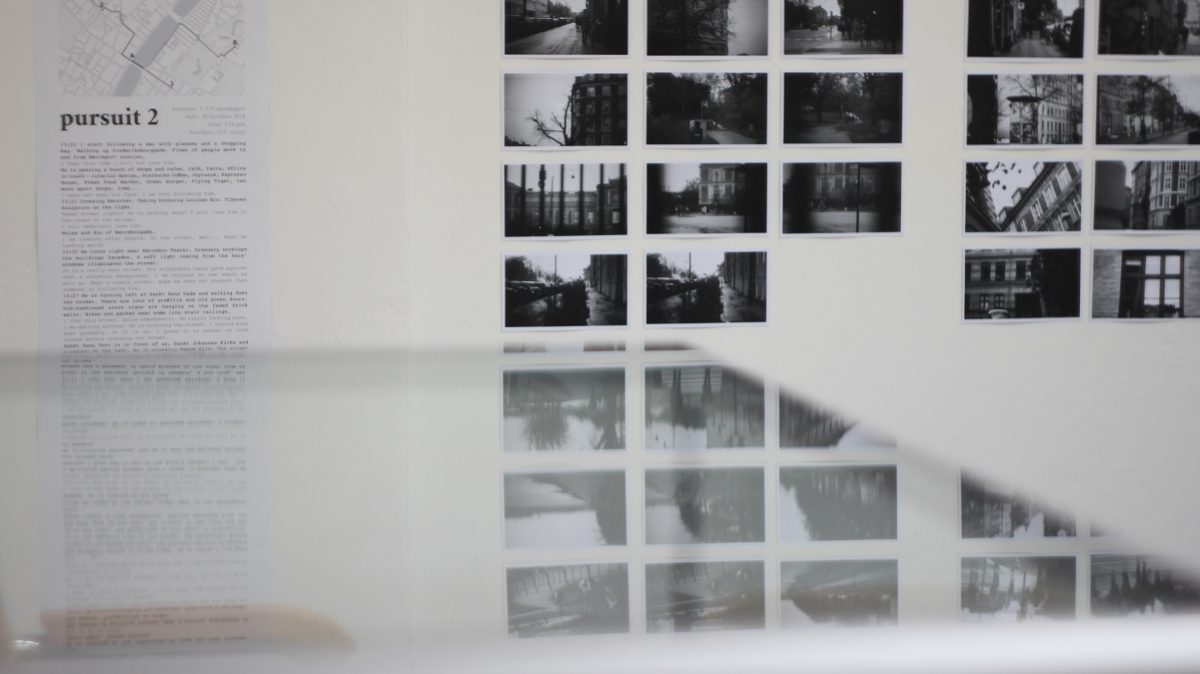
FOLLOWING THE STEPS ON COPENHAGEN’S PAVING STONES
by Mariia Kostenko
“For months I followed strangers on the street. For the pleasure of following them, not because they interested me. I photographed them without their knowledge, took note of their movements, then finally lost sight of them and forgot them.” – Sophie Calle, Suite Venitienne, 1983
I am walking in the labyrinth of Copenhagen’s tiny streets. I am getting lost and am finding the path again and again. I am piercing the space with the interlacement of my movements that have no final destination. I am composing my own experience, embedding my walk with senses and feelings, creating my own connections, attachments and meanings, emphasizing and neglecting. I am looking at the multi-layered reflections in the windows and am capturing them in my memory, sensing the warmth of the light that is mirrored in wet paving stones, the feeling of the street that hovers in the air. I am drawing my own path.
But what may the path of a stranger tell you? Where could it lead you? What could it show to you? What would be your experience of the walk if you are dissolved in the traces of a stranger?
Inspired by Sophie Calle’s project, I took my camera and went out to discover the city following the steps of strangers. I was following two men from afar. I was taking photos, tracking the way and noting my feelings. They did not know that I was following them.
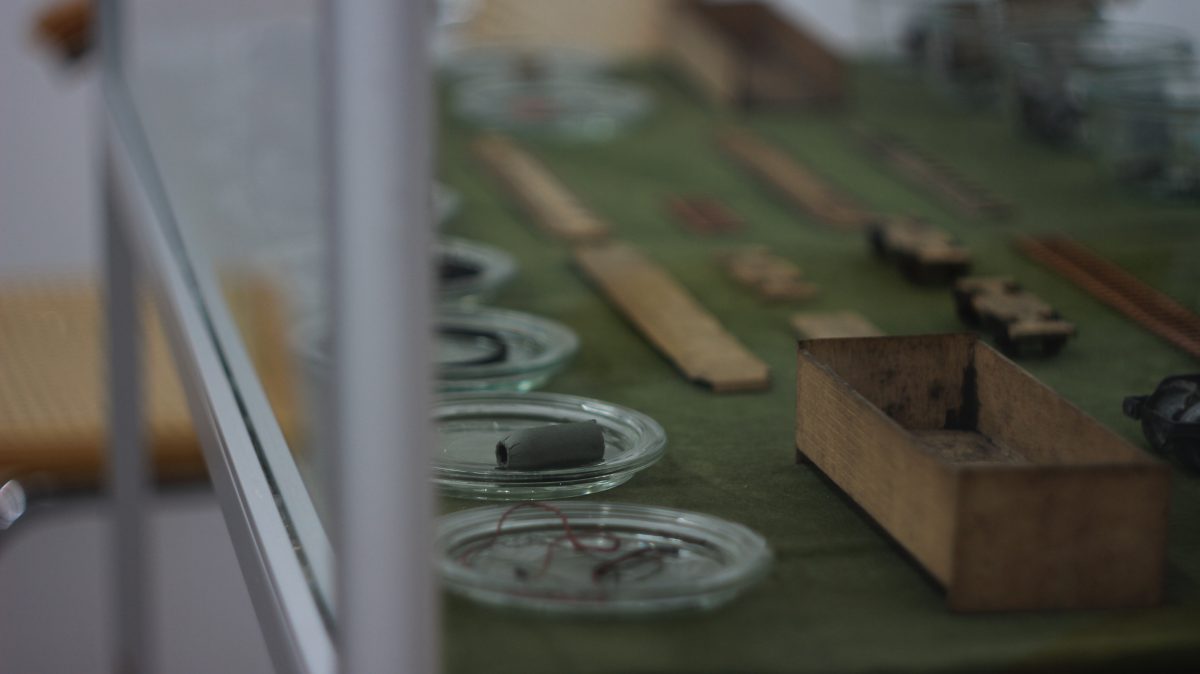
LEFT AND FOUND: “OBJETS TROUVÉS”
Situational Comments on a Parisian Collection
by Henrik Reeh
Every night we find something remarkable on our way home from the metro station. Obviously, certain Parisians spend their holiday month organizing and throwing away things. Next to the trash cans that concierges or superintendents already pulled into the street, small assemblages of things and stuff display a certain retro charm. The following morning, even before the daily passage of the garbage truck, everything will be gone, removed by present-day chiffonniers – ragpickers, who pass during the night and pick up whatever they find useful. We ourselves wonder whether anything deserves to go into our suitcases for Scandinavia. Silence governs the streets, dark and hot in the nights of August. Discovering a wooden tray for cutlery, we collect it and bring it home.
On the very day of our departure, a couple of old suitcases with a disposal code decorate rue de l’Assomption, the second childhood street of French writer Georges Perec. Next to our own temporary home, an entire dresser or, in reality, a cabinet with two drawers appears on the sidewalk. From a storage room in the basement or in the attic, this cabinet has made its way onto the street, out in front of a residential building with polished brassplates on the lower part of the entrance door. The dusty monument of the cabinet contrasts the exquisiteness of the apartment building.
A wooden sculpture – but probably not for very long. The contents are mostly gone. The drawers have been extracted but are not quite empty. A few objects from the past century are in there – objects that may themselves be a century old.
Remnants or dust: construction materials for unpredictable opportunities. They are suggestive traces rather than genuine objects to be displayed on a window sill or on a mantelpiece. These little things are not what people would call “flea-market discoveries”. The objects found on the corner of rue Félicien David and rue Degas are for free. What counts is their atmosphere and their semiotic potential which may take on archival functions, echoing a past where play and toys were different – a reality from which we move further and further away.
I spontaneously photograph the cabinet and its drawers as a sculpture in the street – seen from the front and from the back, posing freely or as an element in urban space. And here we are, at the intersection of two streets in the far West of Paris – but not far from the Mirabeau Bridge: “Sous le Pont Mirabeau coule la Seine / Et nos amours”: “Below the Mirabeau Bridge the Seine is flowing, along with our love stories”, as Apollinaire wrote in a 1912 poem which soon passed from being modern to becoming a classic in France, but not necessarily amongst us.
